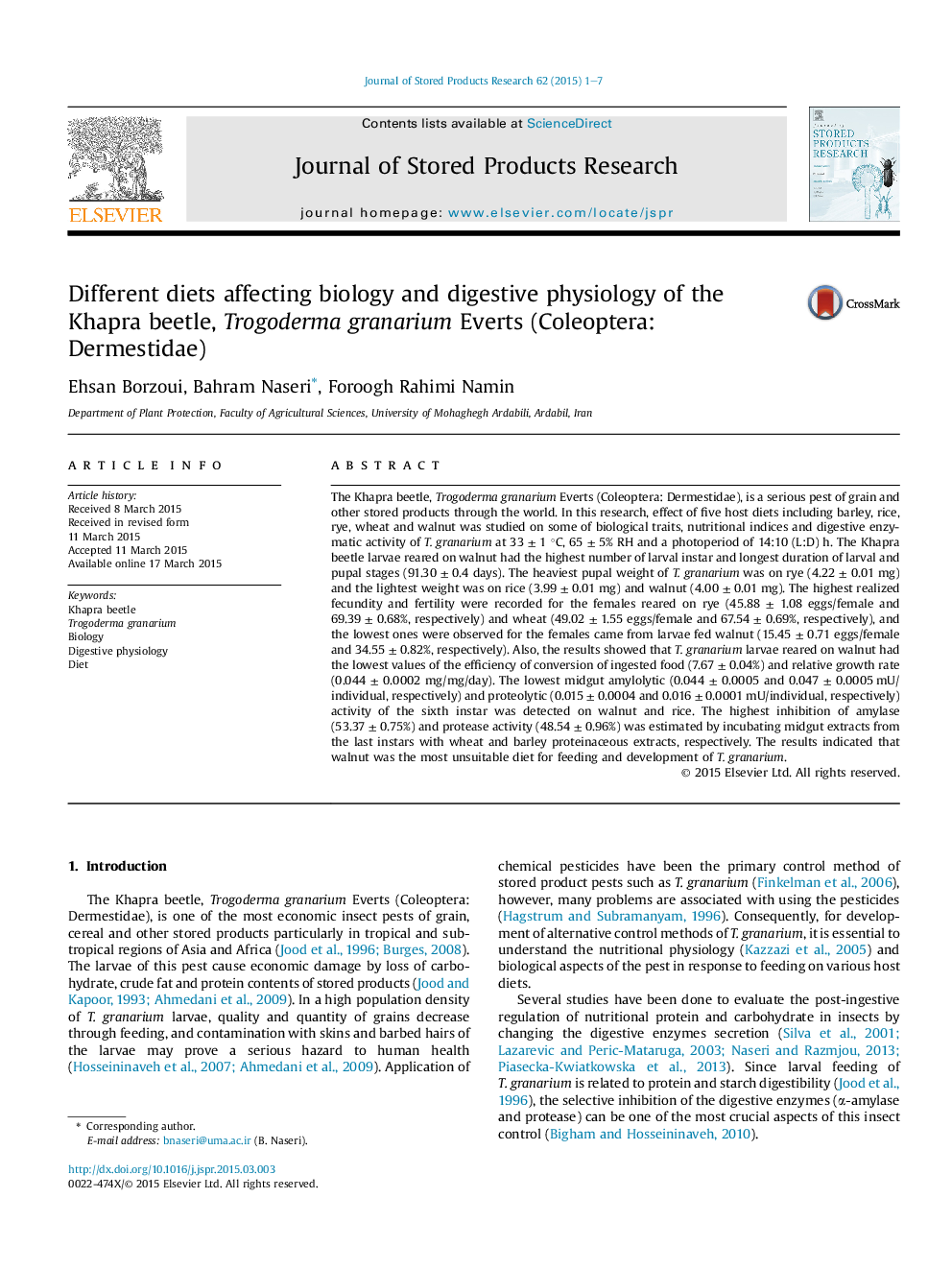| Article ID | Journal | Published Year | Pages | File Type |
|---|---|---|---|---|
| 4517042 | Journal of Stored Products Research | 2015 | 7 Pages |
•The lowest realized fecundity and fertility of Trogoderma granarium were on walnut.•The lowest amylolytic and proteolytic activity of the sixth instar was on walnut.•Walnut was less nutritive due to lower ECI and RGR values than the other diets.
The Khapra beetle, Trogoderma granarium Everts (Coleoptera: Dermestidae), is a serious pest of grain and other stored products through the world. In this research, effect of five host diets including barley, rice, rye, wheat and walnut was studied on some of biological traits, nutritional indices and digestive enzymatic activity of T. granarium at 33 ± 1 °C, 65 ± 5% RH and a photoperiod of 14:10 (L:D) h. The Khapra beetle larvae reared on walnut had the highest number of larval instar and longest duration of larval and pupal stages (91.30 ± 0.4 days). The heaviest pupal weight of T. granarium was on rye (4.22 ± 0.01 mg) and the lightest weight was on rice (3.99 ± 0.01 mg) and walnut (4.00 ± 0.01 mg). The highest realized fecundity and fertility were recorded for the females reared on rye (45.88 ± 1.08 eggs/female and 69.39 ± 0.68%, respectively) and wheat (49.02 ± 1.55 eggs/female and 67.54 ± 0.69%, respectively), and the lowest ones were observed for the females came from larvae fed walnut (15.45 ± 0.71 eggs/female and 34.55 ± 0.82%, respectively). Also, the results showed that T. granarium larvae reared on walnut had the lowest values of the efficiency of conversion of ingested food (7.67 ± 0.04%) and relative growth rate (0.044 ± 0.0002 mg/mg/day). The lowest midgut amylolytic (0.044 ± 0.0005 and 0.047 ± 0.0005 mU/individual, respectively) and proteolytic (0.015 ± 0.0004 and 0.016 ± 0.0001 mU/individual, respectively) activity of the sixth instar was detected on walnut and rice. The highest inhibition of amylase (53.37 ± 0.75%) and protease activity (48.54 ± 0.96%) was estimated by incubating midgut extracts from the last instars with wheat and barley proteinaceous extracts, respectively. The results indicated that walnut was the most unsuitable diet for feeding and development of T. granarium.
Graphical abstractFigure optionsDownload full-size imageDownload as PowerPoint slide
